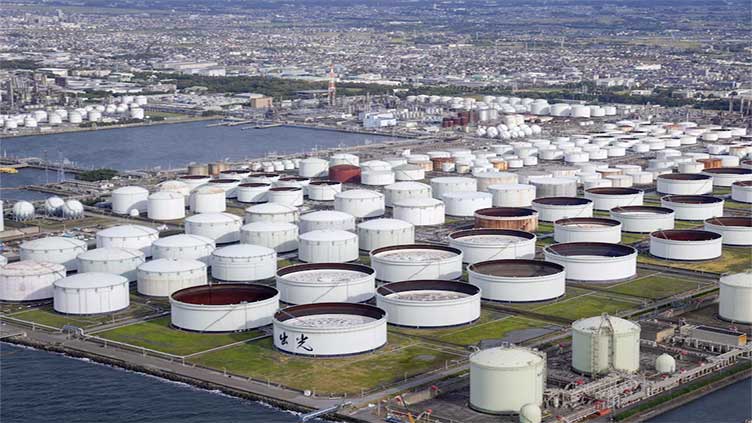Oil prices inch higher amid attacks on Russian energy facilities

Business
Oil prices inch higher amid attacks on Russian energy facilities
LONDON (Reuters) – Brent crude briefly topped $86 per barrel on Monday for the first time since November, before pulling back, as Ukraine stepped up its attacks on Russian energy infrastructure.
Brent crude oil futures for May delivery were up 51 cents at $85.85 a barrel at 1333 GMT.
The April contract for US West Texas Intermediate (WTI) crude was up 62 cents at $81.66, in slow trade with the contract set to expire in the coming days. The more active May delivery contract traded up 60 cents at $81.18.
"The strikes on Russian refineries added $2-$3 per barrel of risk premium to crude last week, which remains in place as we start this week with more attacks over the weekend," said Vandana Hari, founder of oil market analysis provider Vanda Insights.
Overall, a Reuters analysis found the attacks have idled around 7% of Russian refining capacity in the first quarter.
Amid refinery outages, Russia is set to increase oil exports through its western ports in March by almost 200,000 barrels per day (bpd) against the monthly plan to 2.15 million bpd, market participants said.
These Russian outages and extended OPEC+ output cuts have pushed the bank Morgan Stanley to raise its Brent oil price forecasts by $10 per barrel to $90 for the third-quarter of 2024.
Both oil contracts posted gains last week, with prices hitting their highest level since November, buoyed in part after the International Energy Agency strengthened its 2024 demand outlook for the fourth time since November.
On the supply side, Iraq said on Monday it planned to reduce its crude exports in the coming months by more than 100,000 bpd from last month's levels, to compensate for any rise above its OPEC+ quota in January and February.
Iraq has committed to voluntary cuts agreed with the OPEC+ group of oil-exporting countries, which were recently extended into the second quarter.
MONETARY POLICY IN FOCUS
The main focus this week is on the fate of monetary policy in major economies, with many central banks having held on to high interest rates over a protracted period to quell sticky inflation.
The outcome of the US Federal Reserve's two-day meeting that ends on Wednesday should bring clarity on the timing of interest rate cuts, said Tony Sycamore, a market analyst with IG.
The Fed will likely keep rates unchanged this month, while the possibility of an interest rate cut at the June meeting "is now a coin flip," Sycamore said.
Lower interest rates could stimulate demand in the US, the world's biggest oil consumer, supporting oil prices.



